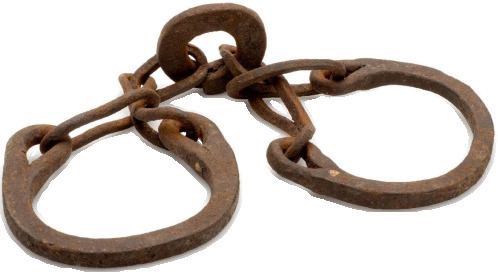 | ||
Slavery in Korea existed since antiquity. The practice of slavery in South Korea is illegal, though forms of modern slavery such as human trafficking still exist, as seen in cases of disabled people enslaved on remote island salt farms. In North Korea, slavery in the form of forced labor is still practiced by the country's regime.
Contents
History
Slavery in Korea existed since before the Three Kingdoms of Korea period, approximately 2,000 years ago, and has been described as "very important in medieval Korea, probably more important than in any other East Asian country". Slavery went into decline around the 10th century, but came back in the late Goryeo period when Korea also experienced a number of slave rebellions.
In the Joseon period, members of the slave class were known as nobi. The nobi were socially indistinct from freemen other than the ruling yangban class, and some possessed property rights, legal entities and civil rights. Hence, some scholars argue that it's inappropriate to call them "slaves", while some scholars describe them as serfs. Furthermore, the Korean word for an actual slave, in the European and American meaning, is noye, not nobi. Some nobi owned their own nobi.
Household nobi served as personal retainers and domestic servants, and most received a monthly salary that could be supplemented by earnings gained outside regular working hours. Out-resident nobi resided at a distance and were little different than tenant farmers or commoners. They were registered officially as independent family units and possessed their own houses, families, land, and fortunes. Out-resident nobi were far more numerous than household nobi. In the chakkae system, nobi were assigned two pieces of agricultural land, with the resulting produce from the first land paid to the master, and the produce from the second land kept by the nobi to consume or sell. In order to gain freedom, nobi could purchase it, earn it through military service, or receive it as a favor from the government. The nobi population could fluctuate up to about one-third of the population, but on average the nobi made up about 10% of the total population.
The hierarchical relationship between yangban master and nobi was believed to be equivalent to the Confucian hierarchical relationship between ruler and subject, or father and son. Nobi were considered an extension of the master's own body, and an ideology based on patronage and mutual obligation developed. The Annals of King Taejong stated: "The nobi is also a human being like us; therefore, it is reasonable to treat him generously" and "In our country, we love our nobis like a part of our body."
The nobi system declined beginning in the 18th century. Since the outset of the Joseon dynasty and especially beginning in the 17th century, there was harsh criticism among prominent thinkers in Korea about the nobi system. Even within the Joseon government, there were indications of a shift in attitude toward the nobi. King Yeongjo implemented a policy of gradual emancipation in 1775, and he and his successor King Jeongjo made many proposals and developments that lessened the burden on nobi, which led to the emancipation of the vast majority of government nobi in 1801. In addition, population growth, numerous escaped slaves, growing commercialization of agriculture, and the rise of the independent small farmer class contributed to the decline in the number of nobi to about 1.5% of the total population by 1858. The hereditary nobi system was officially abolished around 1886–87, and the rest of the nobi system was abolished with the Gabo Reform of 1894. However, slavery did not completely disappear in Korea until 1930, during Imperial Japanese rule.
During the Imperial Japanese occupation of Korea around World War II, some Koreans were used in forced labor by the Imperial Japanese, in conditions which have been compared to slavery. These included women forced into sexual slavery by the Imperial Japanese Army before and during World War II, known as "comfort women".
In South Korea, slavery remains such a controversial topic that it is North Korean historians who have accounted for it more fairly. For instance, the Koryo Museum in the North Korean city of Kaesong is the only museum in Korea that covers the topic of medieval slavery.
Modern slavery
Although slavery is now de jure illegal in all countries, de facto practices akin to it continue today in many places throughout the world.
South Korea
In recent media reports, instances of labor abuse have been compared to slavery, particularly with regards to employment of people with disabilities on remote island salt farms.
In terms of people in modern slavery in absolute numbers South Korea ranked 128th in the 2014 Global Slavery Index, with some 93,700 people estimated to be enslaved.
North Korea
With 1,100,000 people in modern slavery (via forced labor), North Korea is ranked world number one in terms of the percentage of population in modern slavery, 4.373 percent, in The Walk Free Foundation's 2016 Global Slavery Index. North Korea is the only country in the world that has not explicitly criminalized any form of modern slavery. A United Nations report listed slavery among the crimes against humanity occurring in North Korea.
